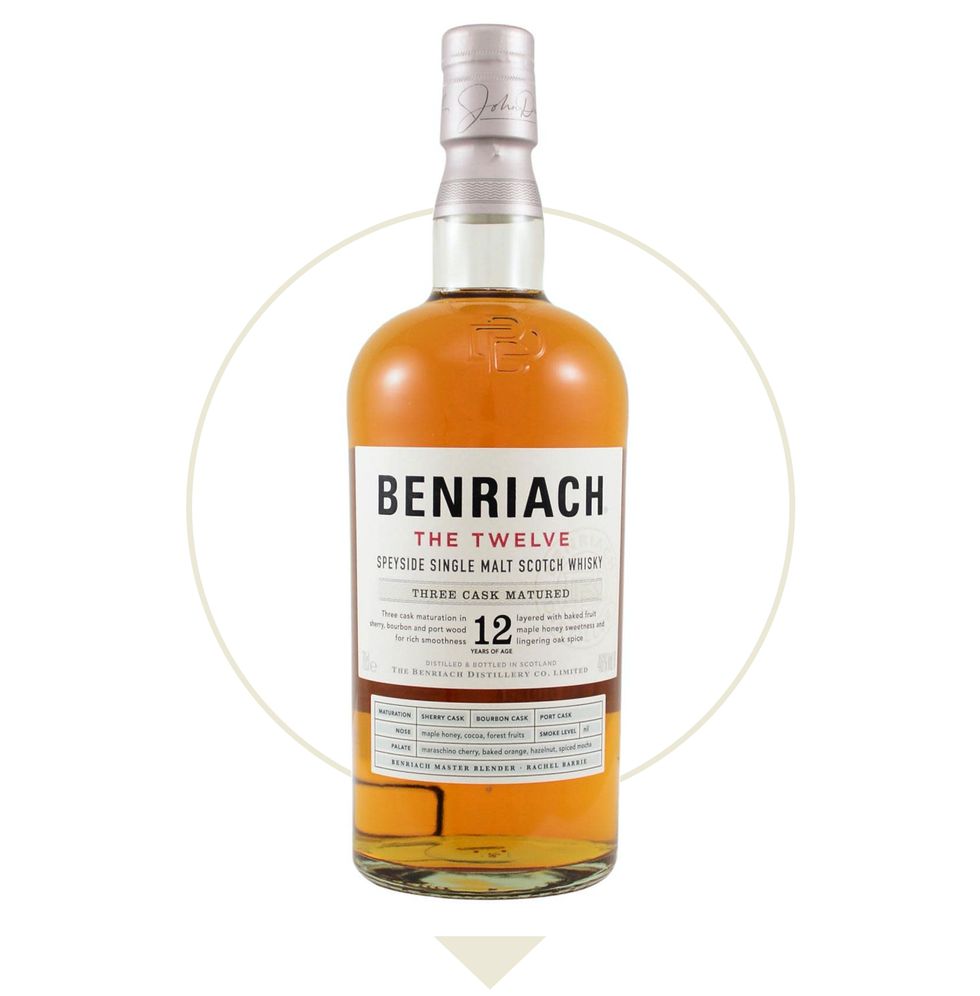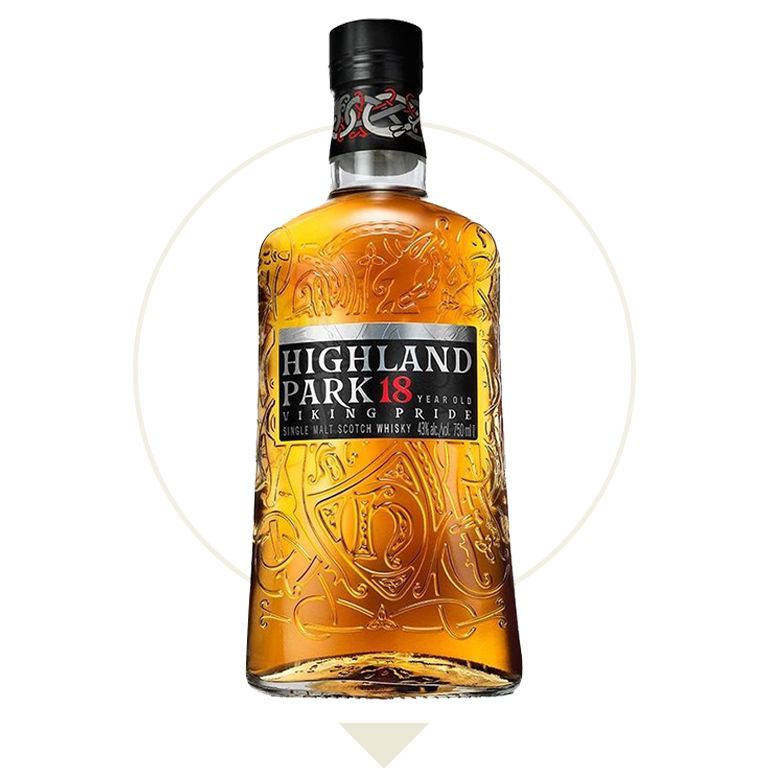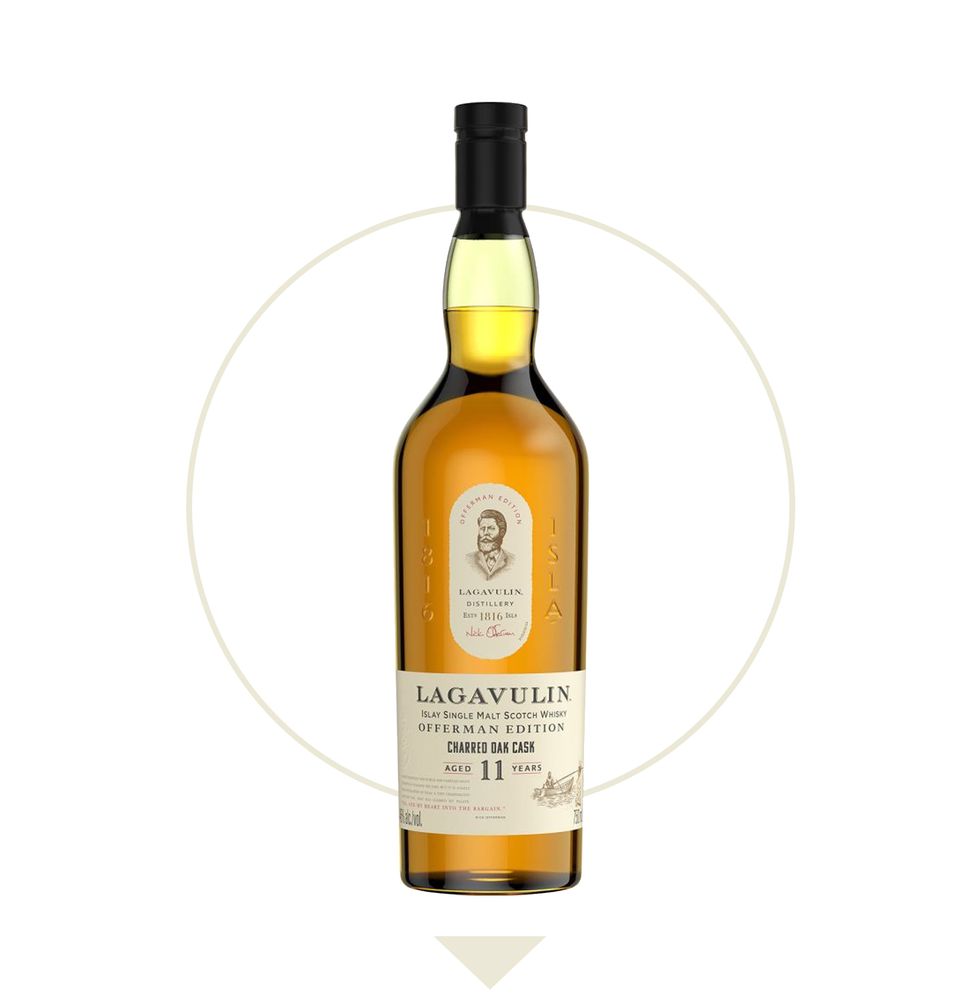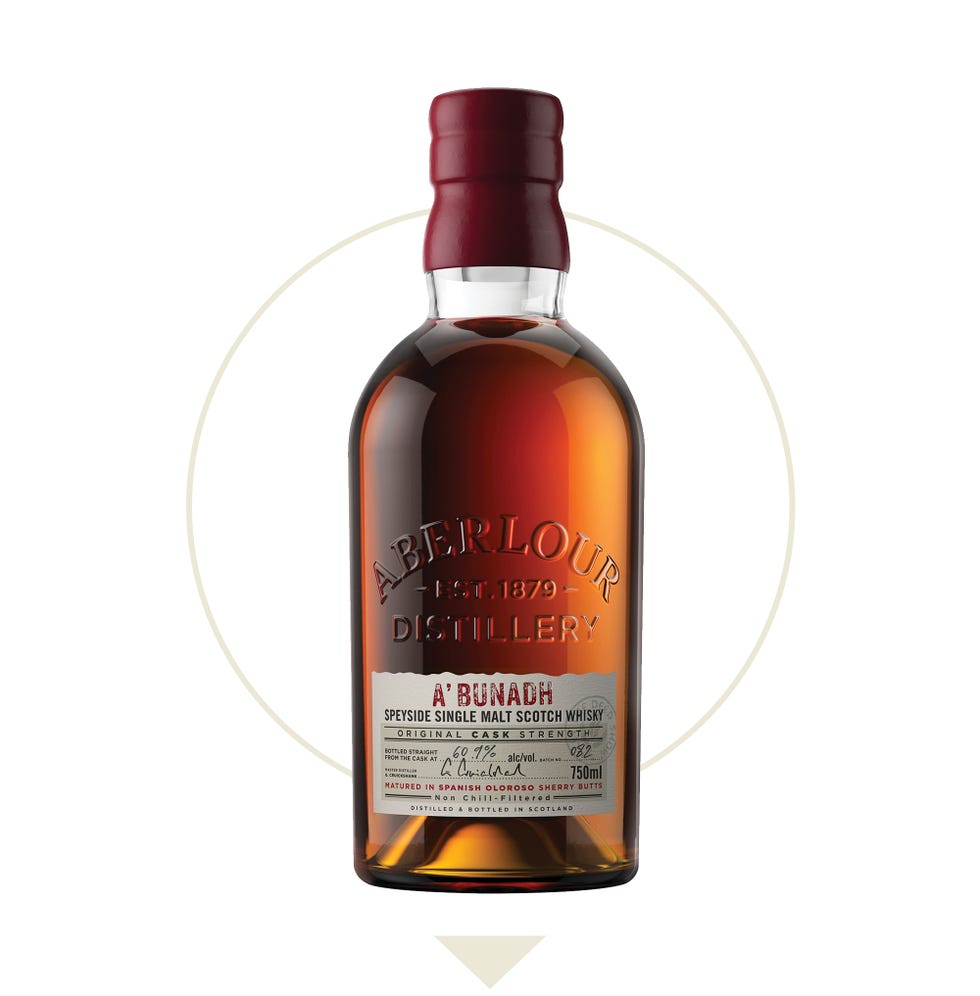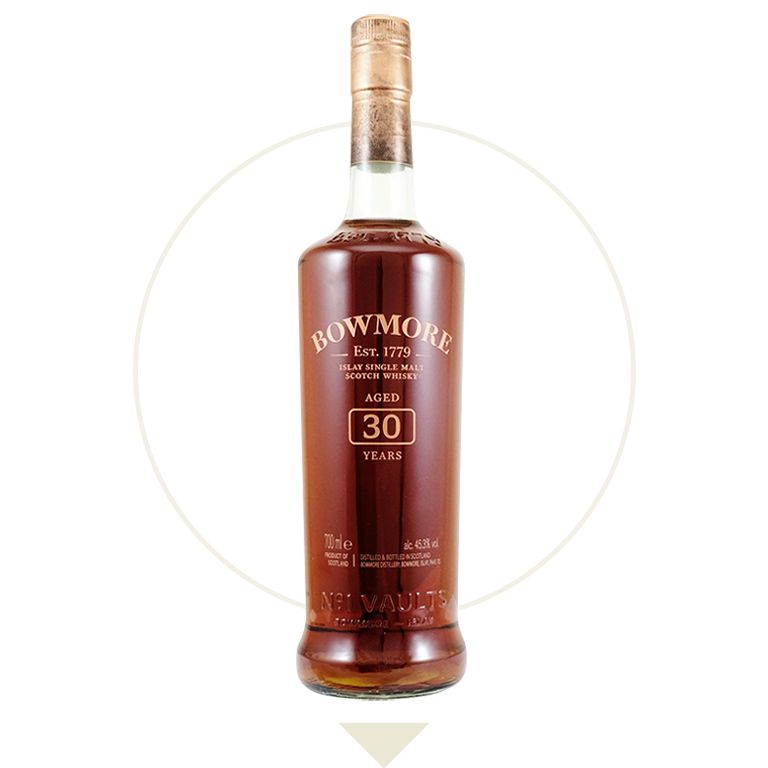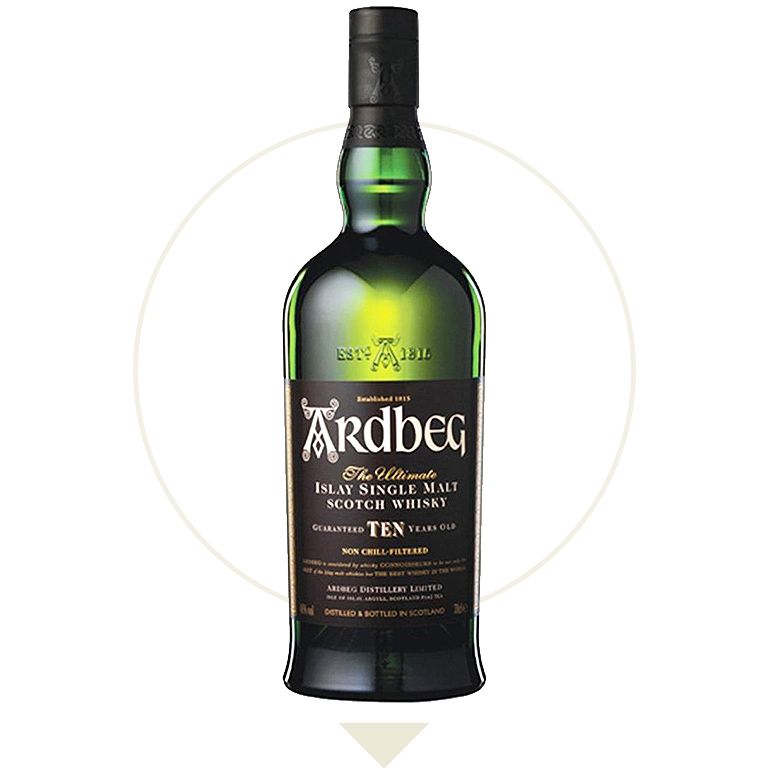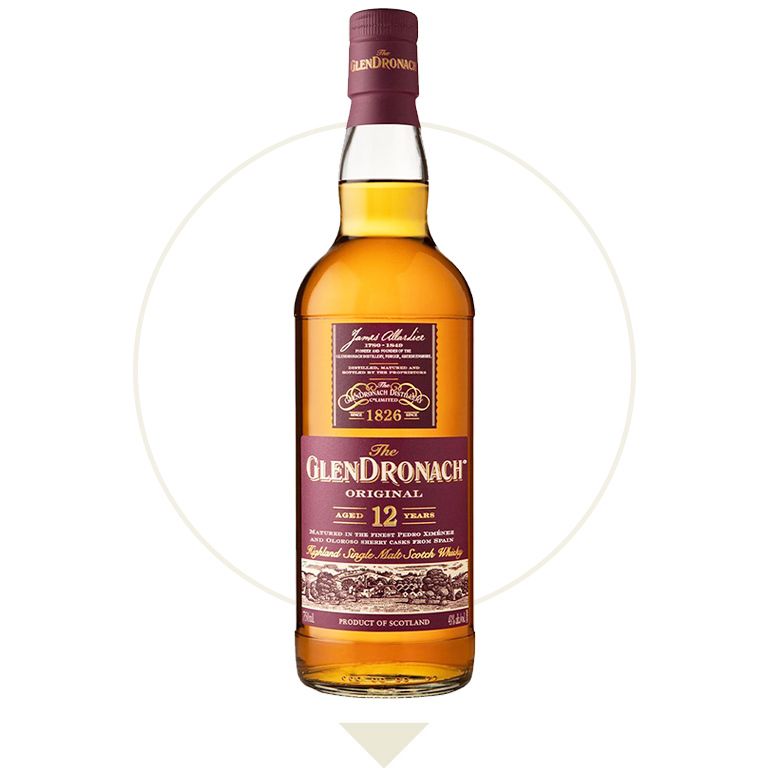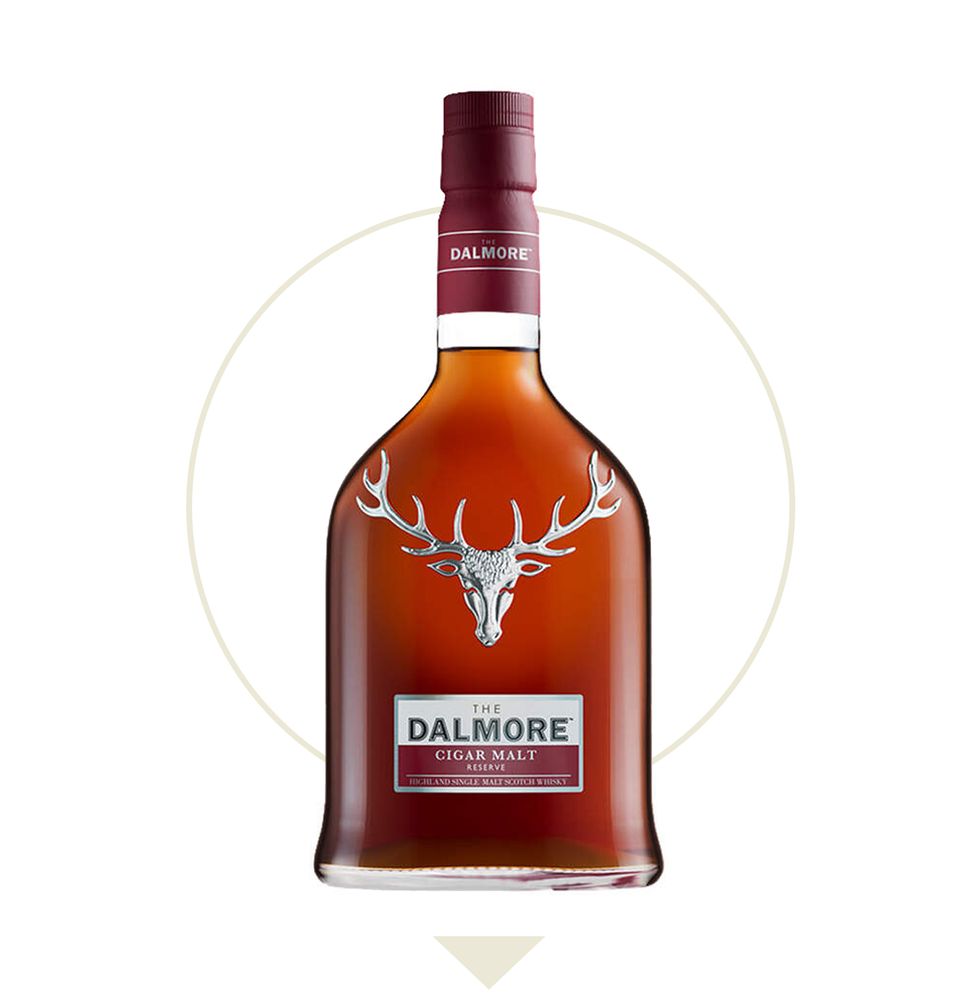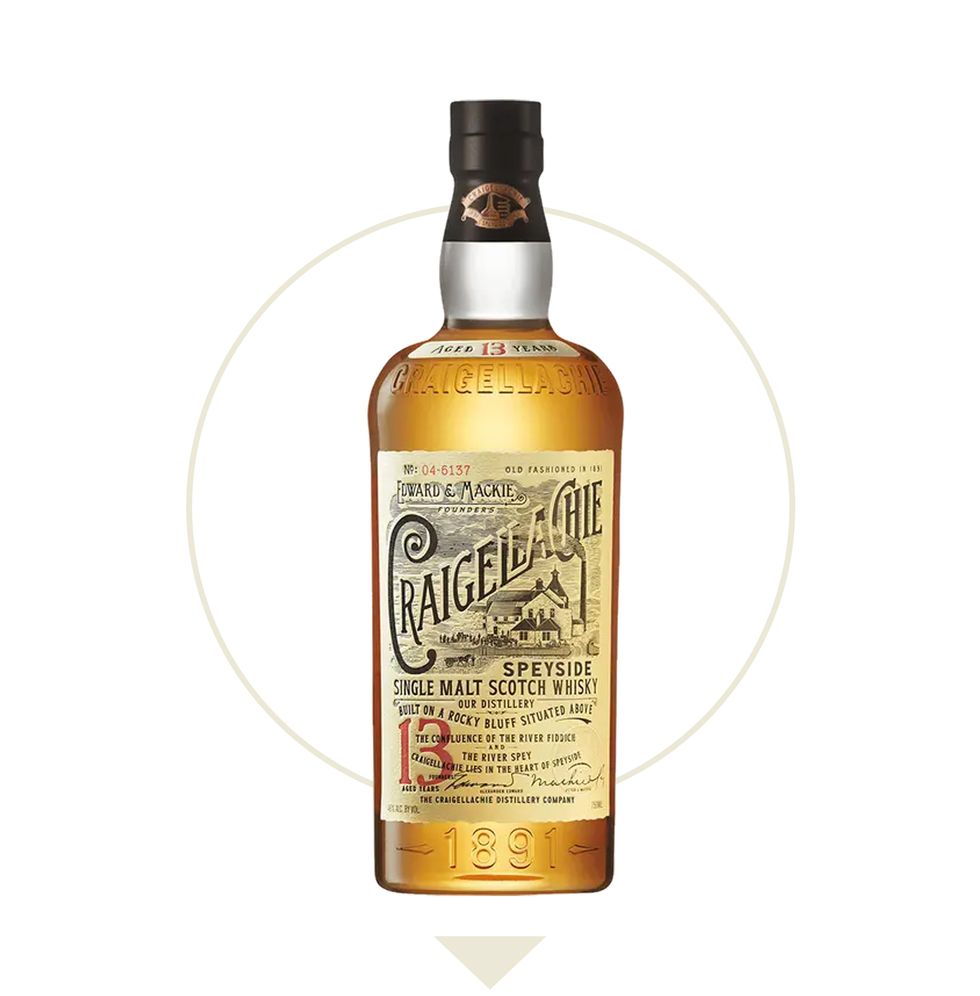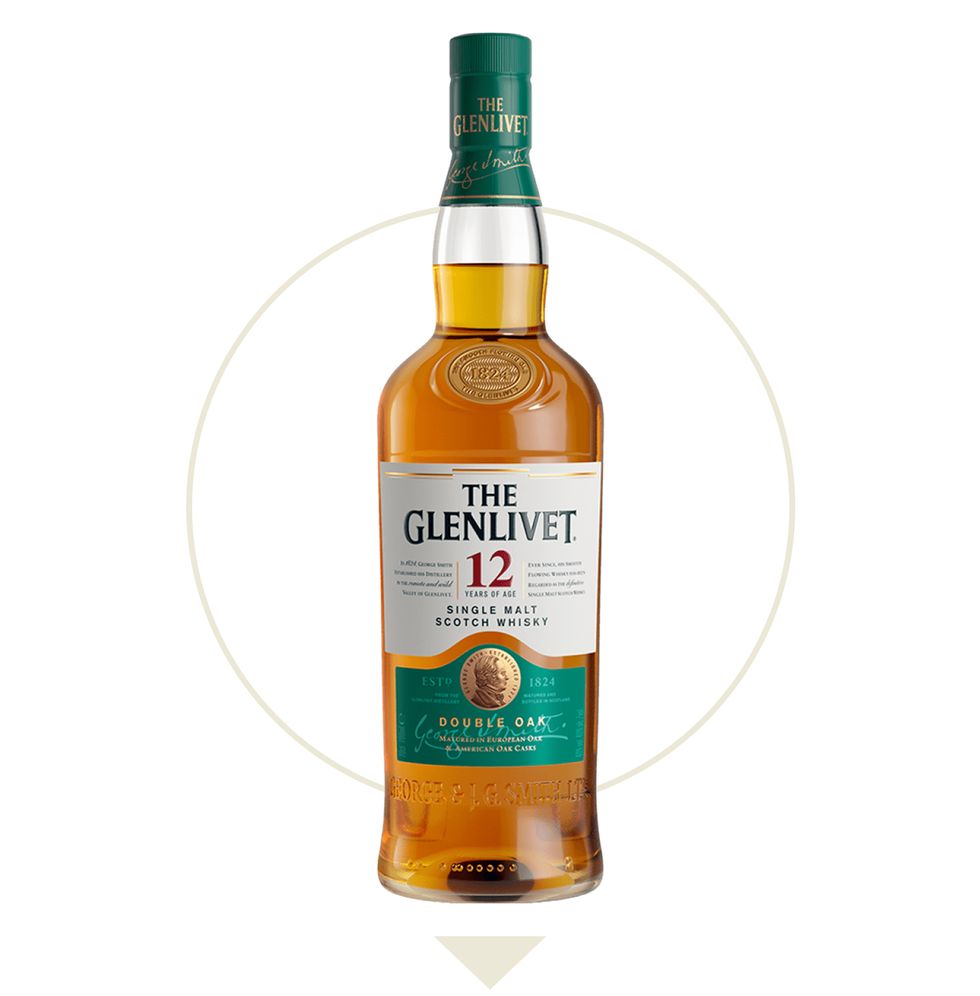Single-malt Scotch is one of the most popular styles of whisky around the world, but the term is still frequently misunderstood. Here’s a quick primer: “single malt” simply means that the whisky is produced at one distillery from a mashbill (or recipe) of 100 percent malted barley. So a bottle of Glenfiddich 12, for example, may be a blend of a few hundred barrels, but all of them come from the Glenfiddich distillery, and the 12-year-old age statement refers to the youngest whisky in the bottle. (Scotch must be aged for a minimum of three years in oak casks.) Easy enough, right?
There are five or six different whisky regions in Scotland, depending on whom you ask, each with its own character—Lowlands, Speyside, Highlands, Campbeltown, Islay, and (sometimes) Islands. While Islay in particular is known for using peat in the malting process to give its whisky a deeply smoky flavor, the majority of Scotch is not smoky at all. (Peat is measured in PPM, or parts per million; the higher the PPM, the smokier the whisky will be.) Legally, a small amount of caramel coloring can be used for color consistency in single malts. Some people are staunchly against this and believe it affects the character of the whisky, but most argue that it makes no noticeable difference. Regardless, the distilleries that don’t use coloring at all in their whiskies will proudly and loudly let this be known.
Whatever type of whisky you choose to drink, remember that there’s no right or wrong way to enjoy it. Whisky is supposed to be fun! Don’t listen to anyone who says you have to add water to enjoy your dram properly, or that you’re ruining a good single malt by pouring it over ice. Hell, if you want to mix a $300 bottle of whisky with Diet Dr. Pepper, go for it. (A suggestion: Maybe also give the whisky a try neat first to really discover its character.)
There are so many to choose from—more than 150 and counting—but below you’ll find where we’re partial. These are the 15 best single-malt Scotch distilleries making whisky right now.
BenRiach
BenRiach isn’t the best known Scotch distillery, but it produces some fantastic whisky. It’s also one of the few distilleries that still does its own floor maltings, albeit occasionally, in which the barley is germinated and then dried on site before distillation. (This is usually done by malting houses nowadays.) The core lineup was relaunched with new bottle designs, names, and expressions a couple of years ago and the most accessible and affordable whiskies are simply named: The Original Ten and The Smoky Ten, The Twelve and the Smoky Twelve. (As you can guess, one of each is peated, the other is not.) A lot goes into these excellent single malts; when it comes to the range of casks used to maturation, they include ex-bourbon, sherry, port, virgin oak, and rum. Last fall, the third edition of Malting Season was released, which is made using barley malted in-house at the distillery, along with a new edition of Smoke Season, the distillery’s most heavily peated whisky. Most recently, a 16-year-old expression was reintroduced to the lineup for the first time since 2016, and there is now a 50-year-old BenRiach whisky, a $25,000 bottle that is the oldest expression from the distillery to date. No color is added to these delicate and flavorful whiskies, which are complex enough for seasoned drinkers but simultaneously suitable for newcomers.
Shop Wine.com Shop The Whisky Exchange
Highland Park
Highland Park is known for a few things that are unique within the Scotch whisky industry—namely, its fixation on all things Viking and its remote Orkney location, which makes it Scotland’s northernmost distillery. (It beats Scapa by about a mile.) The whisky is generally moderately peaty and matured mostly in sherry-seasoned casks, with bourbon barrels used for a few expressions as well. The core range here in the U.S. consists of 12- (Viking Honour), 15- (Viking Heart), and 18-year-old (Viking Pride, the best of the lineup) whiskies, all of which do a nice job of balancing smoke with rich dried-fruit flavors. Another new and really flavorful addition to the family is the Cask Strength expression. The fifth batch of this NAS, non-chill filtered whisky was recently released, bottled at a very high 64.7 percent ABV with big notes of smoke, vanilla, and honey on the palate. If you’re looking to splurge, the distillery released a 54-year-old single malt last year with an appropriate price tag of $54,000. Highland Park does not add coloring to its whisky.
Shop Reserve Bar Shop The Whisky Exchange
Lagavulin
Lagavulin is a very smoky Islay single malt with legions of fans, and one of them happens to be actor and author Nick Offerman. In fact, he’s such a fan that he has collaborated on several releases with the distillery, including the recent Offerman Edition: Caribbean Rum Cask Finish Aged 11 Years, which combines the whisky’s defining peat notes with chocolate and tropical fruit flavors. Celeb collabs aside, the distillery has a variety of special-edition and one-off releases, as well as a range of age statements that veer toward younger—seven-, eight-, and nine-year-old single malts that prove that older doesn’t mean better, in fact. There are also 11-, 12-, and 16-year-old whiskies if you prefer something a little bit more mature. The new Diageo Special Releases collection includes a Lagavulin expression called Fireside Tales, which was matured in first-fill bourbon and refill casks to give it some extra sweetness on the palate. The bottom line is that there’s a Lagavulin for everyone, so peruse the selection and find the bottle that best suits you.
Shop Wine.com Shop The Whisky Exchange Shop Total Wine & More
Laphroaig
Peaty Scotch can be a very divisive issue for whisky drinkers. Some people love the earthy, smoky rush that envelops them from nose to finish, while others think it tastes like an acrid tire fire. There are different levels of peat, of course. Laphroaig, from the Islay region of Scotland, falls around 45 ppm, which makes this a decidedly peat-forward whisky. The 10-year-old is a staple you can find at most bars and liquor stores, and for good reason. Full of seaweed, vanilla, and grill-smoke flavors, it’s incredibly pleasing. If you’re looking for something quite a bit stronger, try Batch 17 of the cask-strength version of this classic, which you can proof down as you like. If you have the money to spend, the extra-aged expressions are where the whisky really starts to take on new dimensions. When it reaches a quarter century of maturation, Laphroaig still brings smoke to the party, but a host of other elements come into play that aren’t immediately evident in some of the younger expressions. Some newer releases from the distillery include Cairdeas 2024 Cask Favourites, a 10-year-old aged in bourbon barrels before getting a sherry finish; Elements 2.0, which was fermented for triple the usual time to develop more fruit notes; and the return of the 18-year-old expression to the lineup after nearly a decade-long absence.
Shop Reserve Bar Shop The Whisky Exchange
Aberlour
Aberlour is sometimes overlooked in the single-malt world, but there is one main reason not to sleep on this Pernod Ricard-owned distillery: the cask strength expression, A’bunadh. This excellent sherry-cask-matured whisky, which debuted in 1997, comes out in batches (it’s up to number 80 now), with each varying slightly in ABV but usually hovering somewhere around 60 percent. The other whiskies in the core lineup are double-matured in sherry and bourbon casks, but the impact of the former is particularly notable on these single malts, especially when you move from the 12- up to the 18-year-old. For those that prefer the vanilla and honey influence that bourbon barrels tend to impart on a whisky’s palate, there’s another cask-strength expression called A’bunadh Alba that’s a nice comparison point to sip and ponder.
Shop Wine.com Shop Reserve Bar Shop Whisky Exchange
Bowmore
Bowmore is an Islay distillery owned by Beam Suntory, which also owns Laphroaig, but the whisky it produces is very different. It also lays claim to the No. 1 Vaults, which are supposedly the oldest maturation warehouses in the world. Bowmore makes layered, textured whisky that stays with you for quite a while as you sip. The 15-year-old spends its last three years maturing in Oloroso sherry casks, while the liquid in the 18-year-old (a standout bottle) spends its life in both bourbon and sherry casks before being blended together. The peat level is about half the PPM of Laphroaig, so while it’s still noticeable, the fruit, caramel, and spice flavors create a whisky potpourri that unravels as you drink. In recent years, Bowmore has collaborated with British automaker Aston Martin, and the most recent release and final release is Masters’ Selection 21 Year Old, aged in tawny port American oak casks and Oloroso sherry butts. And if you wanna get wild, check out ARC-52, a $75,000 single malt aged for 52 years that comes in a decanter that looks more like a spaceship than a bottle.
Shop Reserve Bar Shop The Whisky Exchange
The Glenrothes
The Glenrothes is owned by the same parent company as The Macallan (Scottish firm Edrington), which acquired it again after nearly a decade under ownership of Berry Bros & Rudd. But it is often overlooked in favor of its much more popular Speyside sister distillery. The Glenrothes also uses sherry-seasoned casks for the majority of its maturation and has an in-house cooperage to repair and refurbish these casks, which come from Jerez, Spain. Also like The Macallan, the whisky has natural color. The lineup was recently relaunched with a focus on older statement whiskies–18-, 25-, and 42-year-old expressions. The 18 in particular is fantastic, sitting right in that sweet spot of maturation with notes of dried fruit, milk chocolate, spice, and vanilla.
Shop Reserve Bar Shop The Whiskey Exchange
Ardbeg
Ardbeg is a robust Islay whisky that, at about 50 ppm, is slightly peatier than its neighbor Laphroaig. It’s the sister distillery to Glenmorangie (located in the Highlands) and generally appeals to hardcore fans of the smoky stuff. But there’s a lot of nuance underneath all of that salty, ripe, bold, burnt-vanilla flavor. The whisky is predominantly aged in first- and second-fill bourbon barrels, with some liquid going into sherry butts and French oak as well. The 10-year-old anchors the range, with some hard-to-pronounce, Gaelic-named expressions to round it out. Uigeadail brings sherry-cask whisky into the mix, with dried cherry and prune notes complementing the peat, while Corryvreckan ups the ABV to 57.1 percent. It seems like there are a few new Ardbeg releases every year, the most recent of which are Traigh Bhan Batch 6, a 19-year-old whisky aged in bourbon and Oloroso sherry casks, and the return of the limited-edition 17-year-old, which was first released in 1997 when The Glenmorangie Company acquired the distillery. And if you really want to splurge on something truly exceptional, pick up a bottle of Ardbeg 25. It might cost more than a grand, but you’ll enjoy every ounce of it. Ardbeg does not add coloring to its whisky.
Shop Reserve Bar Shop The Whisky Exchange
The GlenDronach
The GlenDronach might not be as well known as fellow sherry-cask whisky maturation giant The Macallan, but that has been changing since Brown-Forman (parent company of Jack Daniel’s) acquired the distillery in 2016. Most recently, the entire core lineup was relaunched with the same liquid but new bottle and label designs. Like The Macallan, the focus is on sherry-cask maturation, but the whisky produced here is entirely different. It’s aged in a combination of PX and Oloroso sherry casks, giving it a range of flavor from sweet to baking spices. The core lineup ranges in age from 12 to 21 years, and there have been some excellent new limited editions as well. The most recent release was Batch 12 of the Cask Strength version of the whisky, a non-age-statement single-malt bottled at 58.2 percent (strong but very drinkable) that brings an array of new flavors to the palate. And last fall Grandeur Batch 12 was released, an expensive ($830) but fantastic 29-year-old single malt that is worth trying if you find yourself near a bottle. The GlenDronach does not add coloring to its whisky.
Shop Reserve Bar Shop The Whisky Exchange
Bruichladdich
Bruichladdich is a study in creative contradictions. The Islay distillery produces some of the most heavily peated whisky available, literally—the Octomore range ventures into the hundreds of PPM, which is extremely, seriously, not-fucking-around smoky. (The 8.3 release clocked in at 309.1 PPM!) Then there’s the Classic Laddie, a light, unpeated whisky full of citrus and green fruit notes that could not be more different. Recent expressions have focused on the concept of terroir in whisky, an idea that Bruichladdich is trying to convince the doubters really exists. While some people think the cask plays the biggest part in flavor, overriding barley varieties and even peat source, Bruichladdich is intent on proving otherwise. They have me swaying, for what it’s worth. The most recent Octomore series (the 15th) includes some interesting experiments in maturation and barley variety, and proves that age really isn’t an indicator of quality in whisky but terroir really could be. Bruichladdich also released some older whiskies as part of its Luxury Redefined series, an 18-year-old and a 30-year-old that was distilled before Bruichladdich was closed and then reopened in 2001.
Shop Reserve Bar Shop The Whisky Exchange
The Dalmore
The Dalmore is a Highland distillery that has an excellent lineup of expressions and a master distiller who is basically the P. T. Barnum of whisky. If you ever have a chance to participate in a tasting with Richard Paterson OBE, get ready for an experience that involves throwing some whisky on the floor and a flourish of rapid-fire, enthusiastic words. The core range consists of single malts aged from 12 to 25 years, with some special releases in the mix as well. Sherry Cask Select is supposed to have twice the sherry-cask influence as the other whiskies (nearly all have some sherry cask maturation involved), the PortWood is finished in (you guessed it) port pipes, and King Alexander III brings madeira, marsala, and Cabernet Sauvignon wine barrels into the mix. Recently, a new edition of the distillery’s 30-year-old whisky was released along with the second Cask Curation series, a trio of older whiskies that were finished in port pipes, which sells for about $44,500.
Shop Reserve Bar Shop The Whisky Exchange
Craigellachie
“Muscular” is the adjective often used to describe the flavor of the whisky from Craigellachie, a distillery owned by Bacardi (along with Aberfeldy, Royal Brackla, Aultmore, and Deveron). All of these distilleries are key components of the Dewar’s blend, but they make excellent single malts of their own as well. Craigellachie is consistently the most interesting of the bunch, with 13-, 17-, and 23-year-old core whiskies that anchor the range. There’s a nice combination of citrus, fruit, vanilla, and spice in all of these whiskies. The 13-year-old Bas Armagnac Cask came out a few years back, a whisky that was given a secondary maturation period in these French brandy barrels for about a year after aging in bourbon and sherry casks. If you want to splurge, there is, of course, a whisky or two for you–the 33-year-old that was released in 2017, or perhaps the 31-year-old that launched a few years before that. In 2018, the distillery released a 51-year-old whisky that it decided to give away in free drams at special events instead of bottling and selling for thousands of dollars, which was a pretty nice treat for the fans.
Shop Reserve Bar Shop The Whisky Exchange
The Macallan
The Macallan is an extremely popular distillery known for making whisky that is almost entirely aged in sherry-seasoned casks sourced from Spain, giving it a creamy, fruity mouthfeel with a hint of dry spice and cocoa. There are several different ranges to try, from Sherry Oak to Double Cask to Triple Cask Matured. Two new age statements were added to the Double Cask lineup a few years ago, 15- and 18-year-old expressions that are matured in both American and European oak Oloroso sherry-seasoned casks, both exceptional whiskies that are spicy and fruity with notes of chocolate and vanilla. The Macallan is also famous for its incredibly expensive, extra-aged whisky, some of which approaches three-quarters of a century of maturation. This fall, the oldest bottling to date was released, an 84-year-old whisky called Time Space that costs a cool $190,000. Last year, the distillery launched a new edition of its Harmony Collection in collaboration with Stella and Mary McCartney, which came with a few lifestyle pieces designed by the sisters. No color is added to the whisky.
Shop on Reserve Bar Shop on The Whisky Exchange
The Glenlivet
The Glenlivet is one of the most popular and best-selling single-malt Scotch whisky brands, usually positioned neck and neck with fellow Speyside distillery Glenfiddich. The distillery’s history dates back to the early 1800s, and it has persevered over the years through Prohibition and world wars. The whisky-making team is responsible for core expressions like the classic Glenlivet 12, a very good introductory single malt for beginners. From there, the age statement bottles range up to 25 years old, with the Winchester Collection doubling that as a trio of 50-year-old vintages. If you’re looking for cask-strength offerings, check out the Nadurra expressions, featuring sherry and peated cask matured whiskies. Fusion Cask came out last year, an interesting release that was finished in hybrid barrels assembled from rum and bourbon casks. And the oldest release to date just launched, a 55-year-old single malt that is the first in the distillery’s New Eternal Collection.
Shop Reserve Bar Shop The Whisky Exchange
Glenfiddich
Glenfiddich is the other best-known name in Scotch whisky. The Speyside distillery recently doubled its production capacity to meet demand, as the core lineup (which ranges in age from 12 to 18 years old) continues to be incredibly popular around the world. The Glenfiddich team, led by malt master Brian Kinsman, has some tricks up its sleeve, like using whisky from a solera barrel that is never completely empty for its 15-year-old expression, and finishing the 14-year-old in new American charred oak. The Grand Series is where things start to get really interesting—and a whole lot more expensive. The latest release is called Grand Chateau, a 31-year-old whisky that spent its last nine years aging in Bordeaux red-wine casks–a first for the distillery. This is a lovely, slightly tannic, incredibly complex single-malt whisky that costs a little more than $2,000 per bottle. And if you are looking for even more luxury, the Time Reimagined series is a trio of single malts aged for 30, 40, and 50 years.
Shop Reserve BarWine.com
Read the full article here



